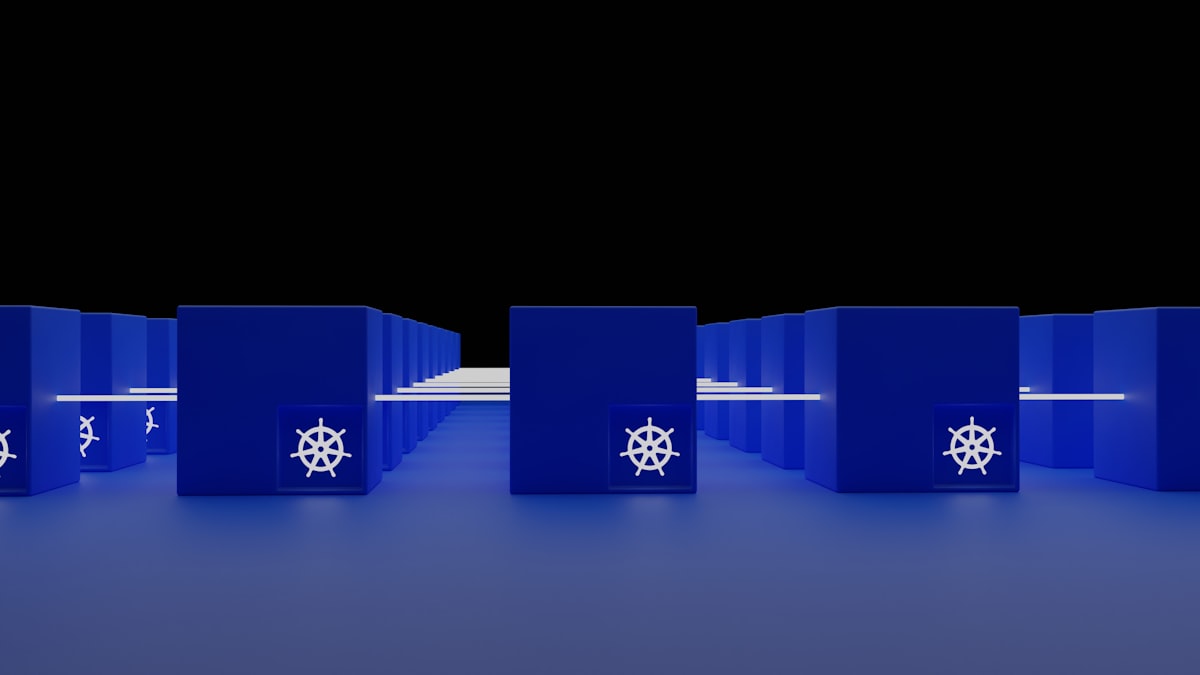Kubernetes Developer Notebook Part 1: Introduction
Enter Kubernetes.

As the complexity and scale of software applications continue to grow, managing and deploying these applications has become an increasingly challenging task. Enter Kubernetes – an open-source platform that automates container orchestration, simplifying the deployment, scaling, and management of containerized applications. In this article, we will provide an overview of Kubernetes, discuss its importance in modern software development, and outline the target audience and prerequisites for getting started with this powerful tool.
Overview of Kubernetes
Kubernetes, often abbreviated as K8s, was originally designed by Google and later donated to the Cloud Native Computing Foundation (CNCF). It has since become one of the most popular container orchestration systems in the world. At its core, Kubernetes aims to provide a platform for automating the deployment, scaling, and management of containerized applications. It does this by abstracting away the underlying infrastructure, allowing developers to focus on writing code and defining desired application states without worrying about the details of how their applications will run on different environments.
Kubernetes achieves this abstraction through a set of core concepts and components, including:
- Nodes: The physical or virtual machines that run Kubernetes and the containerized applications.
- Pods: The smallest and simplest unit in the Kubernetes object model, representing a single instance of a running process.
- Services: A stable network endpoint that provides load balancing and service discovery for Pods.
- Deployments: High-level abstraction for managing application updates and scaling.
- ConfigMaps and Secrets: Mechanisms for managing application configuration and sensitive data.
- Ingress: An API object that manages external access to the services in a cluster.
- StatefulSets and DaemonSets: Specialized controllers for managing stateful and cluster-wide applications.
Importance of Kubernetes in Modern Software Development
The adoption of microservices and containerization technologies, such as Docker, has significantly improved the development and deployment processes for many organizations. However, these advancements also introduced new challenges related to managing and orchestrating containers at scale. Kubernetes emerged as a solution to these challenges, providing several key benefits:
- Scalability: Kubernetes makes it easy to scale applications up or down based on demand, ensuring optimal resource utilization and cost-efficiency.
- High availability: By automatically distributing and rescheduling containers across available nodes, Kubernetes ensures that applications remain highly available, even in the face of hardware failures or other issues.
- Portability: Kubernetes supports a wide range of underlying infrastructure options, enabling applications to run consistently across different environments, including on-premises, public cloud, and hybrid cloud deployments.
- Automation: Kubernetes automates many of the manual tasks involved in deploying and managing containerized applications, freeing up developers to focus on writing code and improving application features.
- Ecosystem: As an open-source project with a large, active community, Kubernetes benefits from a rich ecosystem of tools and integrations, making it easy for organizations to extend its capabilities and tailor it to their specific needs.
Target Audience and Prerequisites
Kubernetes is a powerful tool that can benefit a wide range of professionals involved in software development, including:
- Developers: Kubernetes can streamline the development process by providing a consistent, portable environment for building and testing applications.
- DevOps engineers: Kubernetes simplifies the management of containerized applications and helps to automate deployment pipelines.
- System administrators: Kubernetes offers a scalable, highly available platform for running applications, making it easier to manage infrastructure resources and ensure application uptime.
- Architects: Kubernetes provides a flexible, extensible architecture that can be tailored to meet the specific needs of different organizations and use cases.
Before diving into Kubernetes, it is recommended that you have a basic understanding of the following concepts and technologies:
- Containers and containerization: Familiarize yourself with the concept of containers, their advantages, and how they differ from virtual machines. Learn about containerization technologies, such as Docker, and understand how to create and manage container images.
- Linux: Since Kubernetes is typically deployed on Linux-based systems, having a basic understanding of Linux commands and administration will be beneficial when working with Kubernetes.
- Networking: Gain a basic understanding of networking concepts, such as IP addresses, subnets, DNS, load balancing, and network protocols (TCP/UDP, HTTP/HTTPS). Kubernetes relies heavily on networking for communication between components and for exposing services.
- Cloud computing: Familiarize yourself with the fundamentals of cloud computing, including Infrastructure as a Service (IaaS), Platform as a Service (PaaS), and Software as a Service (SaaS). Understanding the different cloud deployment models (public, private, and hybrid) and the major cloud providers (e.g., AWS, Azure, and Google Cloud Platform) will help you better appreciate Kubernetes' role in the cloud ecosystem.
- Command-line interface (CLI) tools: Get comfortable using CLI tools, as you will often interact with Kubernetes through its command-line tool, kubectl.
- Version control systems: Familiarity with version control systems, such as Git, is essential for managing application code and configuration files in a collaborative development environment.
- Basic programming knowledge: While not strictly necessary, having some programming experience will help you understand and work with Kubernetes manifests, which are usually written in YAML or JSON format.
- Microservices architecture: As Kubernetes is often used to manage and deploy microservices-based applications, having an understanding of the principles and advantages of a microservices architecture will help you make the most of Kubernetes' features.
While not all of these prerequisites are required to start learning Kubernetes, having a foundational understanding of these concepts will make it easier to grasp the various components, abstractions, and workflows involved in Kubernetes development and administration.